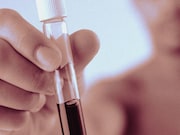Overall, 5.4 percent of 20,000 patients had high-sensitivity troponin I concentration >40 ng/L
THURSDAY, March 14, 2019 (HealthDay News) — The 99th centile of high-sensitivity cardiac troponin I (hs-cTnI) concentration is substantially higher in a hospital population than the manufacturer’s recommended upper limit of normal (ULN), according to a study published online March 13 in The BMJ.
Mark Mariathas, B.M.B.S., from the University Hospital Southampton NHS Foundation Trust in the United Kingdom, and colleagues conducted a prospective, observational cohort study involving 20,000 consecutive inpatients and outpatients undergoing blood tests. In all study participants, hs-cTnI concentrations were measured.
The researchers found that the 99th centile of hs-cTnI for the whole population was 296 ng/L compared with the manufacturer-quoted level of 40 ng/L. In 5.4 percent of the total population, hs-cTnI concentrations were greater than 40 ng/L. The 99th centile was 189 ng/L after excluding 122 patients diagnosed as having acute myocardial infarction and those in whom hs-cTnI was requested for clinical reasons. The 99th centile was 563 and 65 ng/L for inpatients and outpatients, respectively, and was 215 ng/L for patients from the emergency department, with 6.07 percent having levels greater than the recommended ULN. Overall, 39.02 and 14.16 percent of patients from critical care units and of all medical inpatients, respectively, had hs-cTnI concentrations above the recommended ULN.
“The study observations highlight the need for clinical staff to interpret hs-cTnI concentrations carefully and systematically when making a diagnosis of acute myocardial infarction, particularly type 1 myocardial infarction,” the authors write.
Several authors disclosed financial ties to the pharmaceutical and medical device industries.
Copyright © 2019 HealthDay. All rights reserved.








